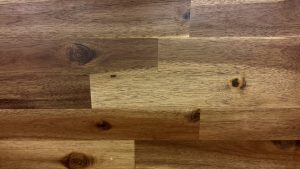Everyone loves the way genuine wood flooring looks, but it’s a very tricky material to work with. As such, wood-effect porcelain tiles and laminate flooring boards are becoming more popular – both replicate the appearance of natural wood without presenting the same maintenance issues or costs.
Of course, you’ll still have to decide between those options, and it can seem like a tough decision until you discover the myriad benefits that wood-effect porcelain tiles hold over laminate flooring.
Whatever type of flooring you choose to get, it’s important to get it installed by a professional. For instance, if you’re looking to remodel your Kitchens and Bathrooms by Manor Design (or a similar professional), you’re likely to find that the job is better executed. The experts’ proficiency helps prevent issues such as uneven surfaces, gaps, or improper alignments, ultimately leading to a more durable and aesthetically pleasing flooring installation that can enhance the overall value and appearance of a home.
- Wood-Effect Porcelain Tiles Are Tougher
Probably the biggest drawback that comes along with using laminate flooring is that it doesn’t hold up very well. The surface will scratch very easily or wear through under frequent foot traffic – not exactly the perfect credentials for flooring. Porcelain tiles are a lot tougher, and it’s also a lot easier to replace a single chipped tile than a whole dented laminate board.
- Wood-Effect Porcelain Tiles Are Quieter
If you’ve ever lived below someone with laminate flooring, you already know how easily it transmits sound – when someone is walking around on it above you, you can certainly tell they are there. If you own a house, that sound is going to bother you when other people are walking around upstairs. If you own an apartment, you’re going to be infuriating your downstairs neighbours.
- Wood-Effect Porcelain Tiles Are Easier To Install
Wood-effect porcelain tiles are an increasingly popular choice for homeowners and builders, and for good reason. Unlike natural wood, wood-effect porcelain tiles are much easier to install and maintain. By using a high-quality tile adhesive such as Rapid Setaflex Grey, wood-effect porcelain tiles can be properly bonded to the substrate, providing a strong and stable surface that can withstand heavy foot traffic and other stresses. In addition, wood-effect porcelain tiles can be cut and shaped using standard tile-cutting tools, which makes them much easier to install than traditional wood flooring.
- Wood-Effect Porcelain Tiles Add Resale Value
Even if you can’t imagine yourself selling your home in the next few years, it’s always worth considering how the choices you make while renovating will impact the value of the property. After all, plans can change, and you might find yourself wanting to move far sooner than you ever imagined. Wood-effect porcelain tiles are far superior to laminate flooring in this regard, tending to significantly improve a property’s value. At the end of the day, they could end up paying for themselves.
